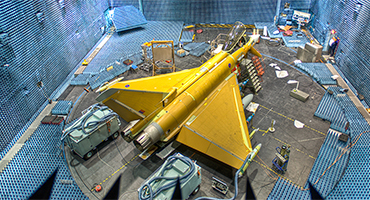F-Gas
Airedale are committed to developing environmentally compliant products, with a focus on f-gas innovation without compromising on performance.
F-Gas Legislation Landscape
The public discourse around global warming and the human impact on the climate are encouraging legislators and industry to make changes. Legislators have been issuing increasingly strict legislation on industry to facilitate a move to more environmentally friendly practices. In the HVAC and refrigeration sector this has been focusing on the GWP metric of refrigerants.
Most popular and wide spread refrigerants (such as R134a, R513A & R32) will become increasingly difficult to obtain.
Depending on soon to be voted on legislation, we may see significant impacts as soon as 2025, which could have widespread impacts on the whole HVAC industry and could require significant changes to Airedale product portfolio and operations.

F-Gas Legislation and the Move to Lower GWP Refrigerants
Airedale are committed to developing environmentally compliant products without compromising on performance. We led the way in moving from R22 to R407C in 1994 with the introduction of the R407C ACC chiller range and we released the first Turbocor-approved R1234ze chiller to the market in 2014. In 2019 we continued in this vein by launching the Azure range of HVAC equipment utilising R32, giving customers even more choice when it comes to refrigerants.
F-gas is an European Commission regulatory action as part of its policy to combat climate change. It is a phasedown rather than a ban, aimed at reducing the CO2 equivalent emissions from hydrofluorocarbons (HFCs) by 79% (relative to 2015) by 2030. The first F-Gas regulation was adopted in 2006. The new regulation replaces this and came into effect in 2015. By 2030 it will cut the EU’s F-gas emissions by two-thirds compared with 2015 levels.
Manufacturers have responded to these changes in legislation by introducing new products with lower GWP refrigerants such as R32, working hard to ensure that performance for users remains high whilst simultaneously reducing environmental impact.
As a consequence of the F-Gas legislation and the first intermediate milestone in 2018, higher global warming potential (GWP) refrigerants such as R410A and R134a, which have GWPs of 2088 and 1430 respectively, have already been subject to availability and price fluctuations.
To meet the changes in regulations, HFOs (hydrofluoroolefins) , also known as unsaturated hydrocarbons, are considered to be the most viable replacements for R134a, with R1234ze (‘ze’) and R1234yf (‘yf’) singled out as the two main isomers considered to have real applications in the cooling industry. Lower GWP HFCs, such as R32, are also now gaining traction as alternatives to R410A.
Lower GWP Alternatives
Fluorinated gases (F-gases) are man-made substances that fall into three groups, hydrofluorocarbons (HFCs, perfluorocarbons (PFCs) and Sulphur hexafluoride (SF6. They are used widely as refrigerants, solvents, insulators and in fire extinguishers and aerosols. They were introduced in many cases as a replacement for ozone depleting substances such as CFCs (which are being phased out as part of the Montreal Protocol and EU legislation). They are, however, powerful greenhouse gases with a global warming effect up to 23,000 times that of CO2 (SF6).
Refrigerants are classed according to their Global Warming Potential or GWP. GWP is a measure of a greenhouse gas when it is released into the atmosphere and benchmarked against CO2 which has a GWP equal to one.
F-Gases
What is GWP?
Viable Replacements
To meet the changes in regulations, HFOs (hydrofluoroolefins), also known as unsaturated hydrocarbons, are considered to be the most viable replacements for R134a, with R1234ze (‘ze’) and R1234yf (‘yf’) singled out as the two main isomers considered to have real applications in the cooling industry. Lower GWP HFCs, such as R32, are also now gaining traction as alternatives to R410A.
Unfortunately refrigerants can’t be selected on GWP alone. Other important factors to be considered include availability, price, flammability, density & cooling capacity.
Flammability Risk
There has been a lot of conjecture around the fact that some of the viable lower GWP alternatives to refrigerants such as R134a and R410A are flammable.
ASHRAE Standard 34: 2010 designates refrigerants according to their flammability. Class A2L gases are lower flammability refrigerants with a maximum burning velocity of ≤10cm/s. The most viable low GWP refrigerant alternatives to R410A and R134a, like R32 and R1234ze, are all A2L.
Engineering standards differentiate 2L, but legislation, building codes and some buying organisations do not. EN378 (Refrigerating systems and heat pumps – Safety and environmental requirements) was revised in 2016 and the revision does include A2L refrigerants.
To burn, A2Ls like R1234ze and R32 need a combination of a powerful ignition source, more than 5,000 times higher than gases such as methane, propane, acetylene and R152a, whilst having a large concentration of the gas in air.
When higher ignition levels within its relevant flammability limits are reached, R1234ze and R32 burns at a low velocity. Furthermore, if the ignition source is removed, the flame is immediately extinguished.
Performance of next generation refrigerants
Despite cooling capacities that are about 25% lower than those achieved with R134a, R1234ze requires lower mean power inputs of 26%, which results in a better coefficient of performance (COP) ratio of about 3%.
Best practice in system design to maximize air flow and heat exchange, including integrating subcoolers and economizers with intelligent controls logic, will ensure that the highest energy efficiency ratios and cooling power per footprint are achieved.
A further benefit associated with ‘ze’ is that Building Research Establishment Environmental Assessment Methodology (BREEAM) points will be easier to obtain in new installations.
Airedale’s TurboChill Free Cooling chiller with R1234ze, for example, automatically receives two BREEAM points for its low global warming potential characteristics.
In contrast, R134a TurboChill TCC and TurboChill Free Cooling TCF variants receive one point for their Direct Effect Life Cycle CO2 equivalent emissions of =1000 kgCO2e/kW cooling capacity and a further point for leak detection and automatic shut down and pump down of refrigerant.
‘ze’ is certainly a good drop-in replacement for R134a. Available at a lower cost per kg than ‘yf’ for a similar COP. ‘ze’ has also been proven to be less flammable than ‘yf’ and has more flexibility from an ATEX [explosive atmosphere] perspective.
We continue to work closely with the major compressor manufacturers who have now adopted ‘ze’ for future development, to offer the new refrigerant across all viable Airedale products including chillers, condensing units and rack-based systems.
Given its low GWP characteristics, there will be no restriction in the mid to long-term on the usage of ‘ze’.
Suitable for use across a broad range of products, R32 has clear financial and environmental benefits. Airedale supports R32 as the most viable current alternative to R32, so we’re developing the Azure range of adapted products for optimal performance in our customer’s applications.
R32 has zero impact on the ozone layer and a significantly lower impact on global warming than previous refrigerants.
Why R32?
• A low GWP (675)
• Zero ozone depleting potential (ODP)
• Ideal for the next generation of equipment
• Higher efficiency and longer pipe runs
• F-Gas phasedown compliant
• Requires less refrigerant volume per kW
• It is rated as A2L – there is a low risk of accidents due to toxicity (A), and low risk of flammability (2L)
• Readily available to meet global demand
• More affordable and available, whilst prices are increasing for R410A
• Smaller charges result in heat exchangers and other components being more compact
• Environmental benefits such as zero ozone depletion potential and being easy to reuse and recycle, resulting in a lower carbon footprint
In comparison to R410A
• R32 reduces charging volume by 30% compared to R410A
• R32 has higher efficiency (10% compared to R410A) => Higher COP and EER
• R32 delivers better performance at extreme outdoor temperature
• New Refrigerant has a GWP of 675 compared with R410A’s GWP of 2,088
• Superior energy efficiency resulting in a lower refrigerant charge
Products in Airedale’s Azure range, such as Ultima R32, are eligible for 2 BREEAM points. 1 point is awarded for Direct Effect Life Cycle CO2 equivalentemissions (DELC) of ≤1000kgCO2 -eq/kW and a further point is issued due to all systems being hermetically sealed, with a tested leakage rate of less than 3g/year
R32 is not a drop-in replacement for R410A. The Azure R32 range has had to be developed from the ground up to be suitable for R32. R32 gas cannot be used in existing R410A systems and vice versa.

QUALITY & INNOVATION
Innovative product development is key to Airedale’s success, setting air conditioning industry standards and giving Airedale the edge

TESTIMONIALS
Airedale by Modine are trusted globally in some of the world’s most demanding HVAC applications

ENERGY & EFFICIENCY
The Ecodesign Directive is an approach to unit design which targets energy efficiency and lower carbon emissions.







